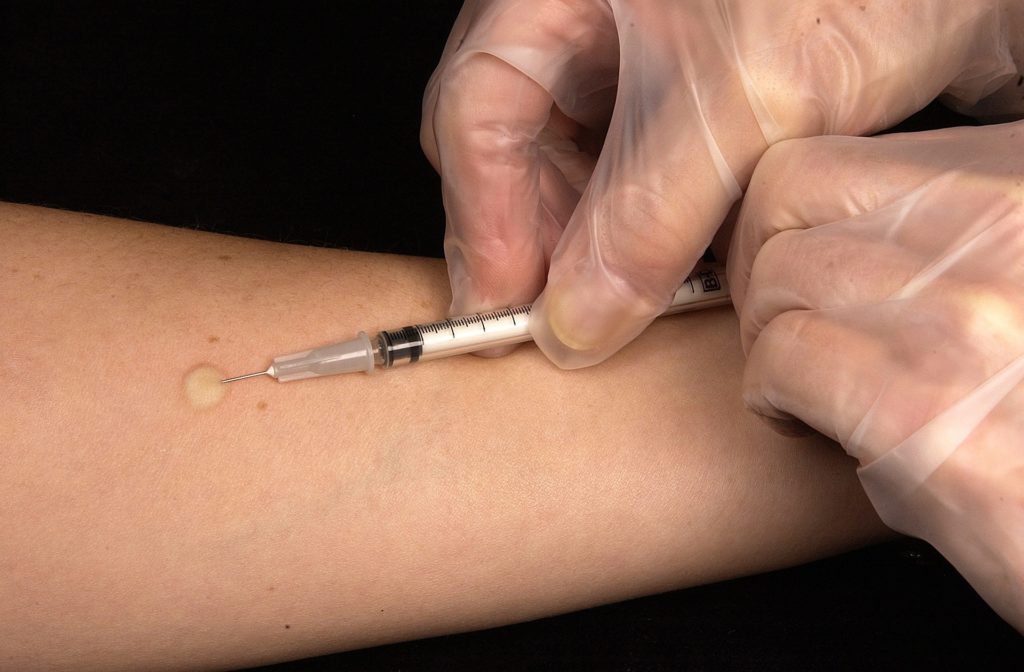
A 30-minute walk at moderate intensity temporarily reduced blood pressure in women with rheumatoid arthritis, not only at rest but also under stress. This was the conclusion drawn from a study involving physical and cognitive tests conducted at the University of São Paulo (USP) in Brazil.
The study was reported in an article published in the Journal of Human Hypertension and was supported by FAPESP as part of a Thematic Project on the effects of reducing sedentarism in different clinical populations.
Rheumatoid arthritis is an autoimmune inflammatory disease affecting synovial joints and causing pain, swelling and progressive physical incapacity. People with rheumatoid arthritis also tend to have high blood pressure, and previous research has shown that the risk of death from cardiovascular disease is 50% higher for them than for the general population.
“A number of factors increase blood pressure in these patients, including chronic inflammation, lack of exercise, the adverse effect of the drugs used to treat the disease on the function and structure of blood vessels, and less elastic arteries that tend to narrow. Blood pressure can be elevated and vary more than normal during the day even when the arthritis is controlled. For these patients, we need to think about non-pharmacological strategies that enhance blood pressure control,” said Tiago Peçanha, last author of the article. Peçanha is a senior lecturer in cardiovascular physiology at Manchester Metropolitan University’s Department of Sport and Exercise Sciences in the United Kingdom and a researcher at USP’s Medical School (FM-USP) in Brazil.
Physical exercise is known to be one of the best non-pharmacological ways to control blood pressure. “However, we don’t know exactly what happens in the case of rheumatoid arthritis patients with elevated blood pressure. Mental stress and pain may well raise their blood pressure over and above the elevation due to the autoimmune disease,” said Tatiane Almeida de Luna, first author of the article. The study was part of her master’s research. “The results of our study were very positive. They reinforce the importance of exercise to cardiovascular management and as a complementary form of blood pressure control for these patients.”
According to Peçanha, the findings can apply to other autoimmune inflammatory diseases, such as lupus, psoriatic arthritis, inflammatory myopia and juvenile lupus. “Rheumatoid arthritis is an inflammatory disease model that resembles these other diseases, where inflammation and its consequences, such as elevated blood pressure, occur in a similar manner,” he said.
Systolic arterial blood pressure
High blood pressure, or hypertension, is a chronic disease defined by the World Health Organization (WHO) as systolic blood pressure equal to or above 140 mmHg and/or diastolic blood pressure equal to or above 90 mmHg. Rheumatoid arthritis patients tend to have elevated systolic arterial blood pressure – the higher of the two numbers in a reading, representing the pressure in the arteries when the heart beats and pumps blood. Prior research shows that systolic blood pressure is not ideal (under 140 mmHg) in 50% of these patients, even while they are sleeping and even with treatment for hypertension.
According to the researchers, blood pressure rises in rheumatoid arthritis patients in response to mental stress, physical effort and pain, contributing to the high risk of cardiovascular complications of the disease. A recent study by the group found blood pressure to be elevated in post-menopausal women with rheumatoid arthritis as a response to lower limb exercise, with more severe inflammation leading to more blood pressure elevation.
Temporary reduction
In the latest study, the researchers analyzed 20 women volunteers aged between 20 and 65, and diagnosed with rheumatoid arthritis and hypertension. They were undergoing treatment for rheumatoid arthritis at Hospital das Clínicas (HC), the hospital complex run by FM-USP.
Women of reproductive age took the tests during the first seven days of their menstrual cycle (follicular phase). All subjects underwent two sessions. The first involved pre-intervention measurement of blood pressure and heart rate, at rest and in response to different types of stress. In the second session, a randomly selected group walked at moderate speed on a treadmill for 30 minutes, while a control group stood on the treadmill for 30 minutes without performing any exercise. Both groups had their blood pressure measured before and after the session.
After exercise or rest, they took tests involving stress that could affect their blood pressure. One was a cognitive stress test (Stroop) in which they were shown a list of color words (e.g. “red”, “blue”, “green”) printed in incongruent colors (e.g. “red” printed in blue) and asked to say the color of each word rather than the word itself.
Another was a pain tolerance test (Cold Pressor) in which they were asked to place a hand in cold water at 4 °C. This was designed to produce mild to moderate pain and ended with voluntary withdrawal of the hand. Again, their blood pressure and heart rate were measured after the tests.
After the post-intervention assessments, the participants were fitted with an ambulatory blood pressure monitor for 24-hour measurement in real time. Systolic blood pressure remained stable in all 20 women before and immediately after the treadmill session, but was higher in the measurements made while they were resting. “This shows that exercise prevented a rise in blood pressure,” Peçanha said.
The 24-hour monitoring test showed that exercise lowered systolic pressure by 5 mmHg on average. “This is in line with the results of meta-analyses involving this type of exercise for the general population. This amount of reduction is significant, correlating with a 14% lower risk of death from stroke, a 9% lower risk of death from coronary arterial disease, and a 7% lower risk of all-cause death for people with hypertension,” he explained.
“The temporary effect of just one aerobic exercise session is very important since acute reductions in blood pressure on several consecutive days are expected to accumulate and lead to a sustained reduction over time, contributing to better control of hypertension in rheumatoid arthritis.”
The reduction was observed even after the stress tests. “The Stroop test is widely used in studies that analyze the cardiovascular response to mental stress, for example. In rheumatoid arthritis patients, it typically raises systolic pressure [to 16 mmHg] and diastolic pressure [to 12 mmHg] on average. In our study, however, systolic pressure fell by 6 mmHg after exercise,” he said, adding that this reduction was not observed when they performed the test after a resting period (control).
In the Cold Pressor (pain tolerance) test, systolic and diastolic pressure are expected to rise to 18 mmHg and 11 mmHg respectively on average, while heart rate typically rises by 1 bpm. In the study, systolic pressure rose even more sharply (to 25 mmHg) in six patients.
On the day of the 30-minute walk, systolic pressure fell by 1 mmHg on average. On the day when they remained at rest, it rose by 4 mmHg.
“Stressful situations are known to increase the risk of cardiovascular events, such as stroke and heart attack. The study showed that the reduction in systolic blood pressure caused by physical exercise can potentially mitigate cardiovascular problems in rheumatoid arthritis patients,” Peçanha said.



